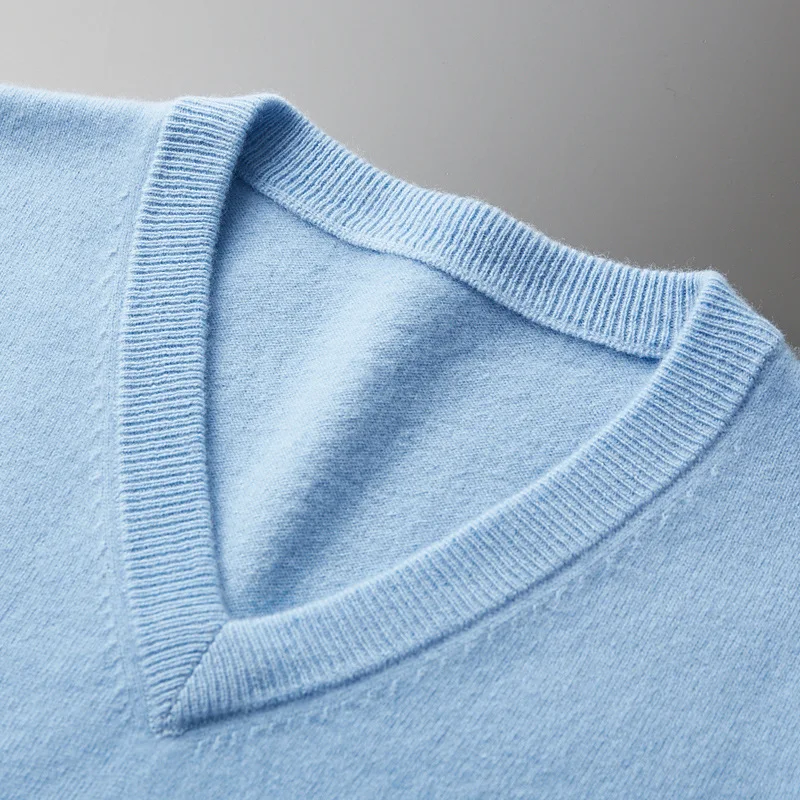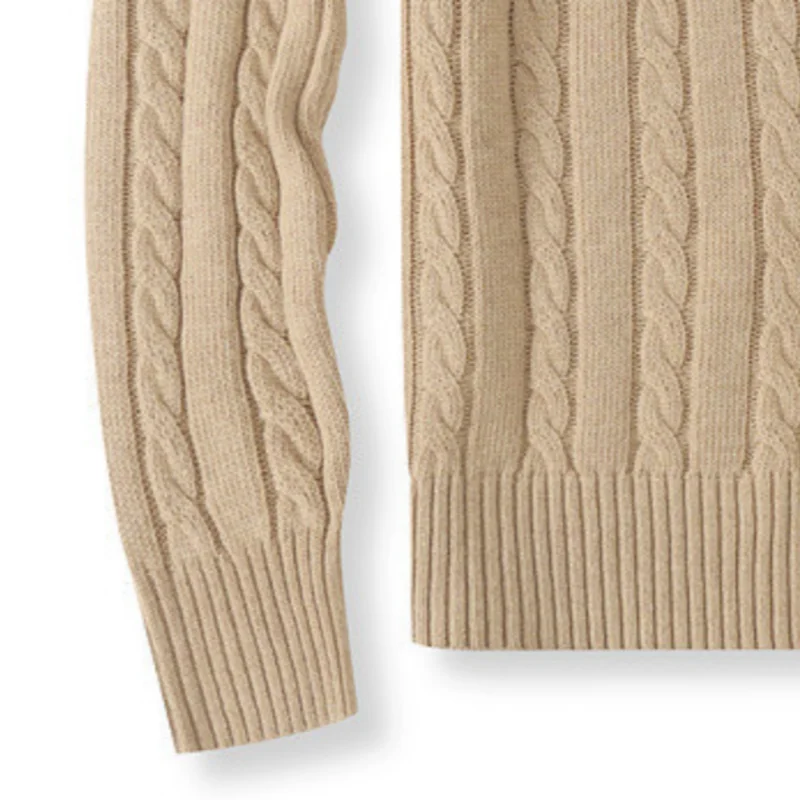Understanding Cashmere: Nature’s Luxury Fiber
Cashmere stands as one of nature’s most exquisite gifts—a fiber of extraordinary softness and warmth harvested from the undercoat of specific mountain goats. What makes cashmere truly remarkable is its incredible fineness, with fibers measuring just 14-16 microns in diameter. For perspective, that’s about six times thinner than human hair, which typically measures 70-100 microns. This microscopic size creates the unmistakably soft, lightweight feel that cashmere lovers cherish.
The molecular structure of cashmere fibers contains natural scales and proteins that give the material its exceptional insulating properties while maintaining breathability. However, this same delicate structure makes cashmere particularly vulnerable to harsh treatments. The scales can become damaged or matted with improper handling, causing the luxurious softness to diminish.
When properly cared for, quality cashmere pieces become genuine heirlooms, often lasting 30+ years while maintaining their sumptuous feel. Understanding proper care is essential before styling your cashmere pieces, as the maintenance you provide directly impacts the longevity, appearance, and tactile experience of your garment.
Daily Habits for Preserving Your Cashmere
Implementing simple daily habits can dramatically extend the life of your cashmere pieces:
Air between wears: Always allow cashmere to rest at least 24 hours between wearings. This gives the natural fibers time to release moisture and return to their original shape. Simply hang the garment in a well-ventilated space away from direct sunlight.
Rotate your pieces: Implement a rotation system for your premium cashmere sweaters to prevent excessive wear on any one item. Even invisible body oils and microscopic debris accumulate with each wearing.
Handle with care: Always fold cashmere rather than hanging it on conventional hangers, which can create shoulder dimples and stretching. When putting on or removing a cashmere piece, avoid pulling it over jewelry or watches.
Prevent snags: Be mindful of rough surfaces that can catch on delicate fibers. Common culprits include unfinished wood, velcro fasteners, and even rough skin on hands and nails. Consider wearing a smooth scarf between your jewelry and cashmere neck areas.
Spot clean quickly: Address small marks or spots immediately with a clean, damp cloth by gently blotting (never rubbing) the affected area.
These preventative measures form your first line of defense against premature wear and tear, significantly reducing how often you’ll need to subject your cashmere to full washing procedures.
Essential Pre-Wash Preparations
Before subjecting your precious cashmere to any washing method, proper preparation ensures optimal results:
Check the care label: Manufacturer recommendations provide valuable guidance specific to your garment. Some cashmere blends may have special requirements beyond standard cashmere care.
Address existing pilling: Gently remove any pills before washing to prevent them from setting more permanently. Learning more about preventing and addressing pilling in your cashmere garments will help maintain their appearance.
Spot-clean when possible: For minor stains or small soiled areas, try spot cleaning first to avoid unnecessary full washing. Use a small amount of cashmere-safe detergent on a damp cloth and gently press (don’t rub) the affected area.
Test cleaning products: Always test any cleaning solution on an inconspicuous area first, such as an inner seam, to ensure it doesn’t damage or discolor your garment.
Turn inside-out: Before washing, turn cashmere garments inside-out to protect the outer surface that’s visible when worn.
These preparatory steps might seem meticulous, but they significantly enhance washing outcomes while minimizing potential damage to your cherished cashmere pieces.
Hand-Washing Cashmere: The Gold Standard Method
Hand washing remains the safest and most effective method for cleaning cashmere at home:
Prepare your basin: Fill a clean basin or sink with cool to lukewarm water—never exceeding 86°F/30°C. Hot water causes protein fibers to shrink and felt irreversibly.
Choose the right cleanser: Add a small amount of pH-neutral wool detergent or baby shampoo. These gentle cleansers preserve cashmere’s natural oils while effectively removing dirt. Avoid standard laundry detergents, which contain harsh enzymes and brighteners that damage delicate fibers.
Soak properly: Fully submerge your garment and gently press it into the water. Allow it to soak for 10-15 minutes, which gives dirt and oils time to release from the fibers without aggressive agitation.
Clean with care: Using very gentle movements, lightly squeeze the soapy water through the garment. Avoid wringing, twisting, or rubbing the fibers together, as this causes felting and pilling.
Rinse thoroughly: Drain the soapy water and refill with clean, cool water. Gently press the garment to release soap. Repeat this process until the water runs clear and no soap remains. Soap residue can attract dirt and cause fiber damage over time.
Remove excess water: Press (don’t wring) the garment against the side of the basin, then lay it flat on a clean white towel. Roll the towel with the garment inside to absorb excess moisture.
For a more detailed approach to washing various cashmere items at home, consider exploring specific techniques for different garment types.
Machine Washing Cashmere: When and How
While hand washing is ideal, machine washing can be appropriate for certain cashmere pieces when done correctly:
When machine washing is appropriate:
* The care label specifically permits machine washing
* The garment has a simple construction without embellishments
* You’re comfortable with a slightly higher risk to the garment
Essential machine washing guidelines:
Always use a mesh bag: This prevents stretching and protects the garment from agitation damage.
Remove any removable hardware: Buttons, brooches, or other attachments should be removed if possible.
Use proper settings: Select the delicate/wool cycle with cold water and minimal spin. High speeds can stretch or tear delicate fibers.
Consider load size: Wash cashmere either alone or with similar lightweight, delicate items. Never mix with heavy items or those containing zippers or hooks.
Act quickly after the cycle: Remove cashmere immediately when the cycle ends to prevent wrinkles and misshaping.
WARNING: Some cashmere should never be machine washed, including heavily structured garments, pieces with embellishments, or especially fine/thin knits. When in doubt, default to hand washing.

Proper Drying Techniques for Perfect Results
Proper drying is as crucial as washing for maintaining your cashmere’s quality and shape:
Initial water removal: After washing, never wring or twist cashmere. Instead, lay the garment flat on a clean, white bath towel. Roll the towel with the garment inside like a jelly roll, applying gentle pressure to absorb excess moisture.
Reshaping while damp: While the garment is still damp, gently reshape it to its original dimensions. Pay special attention to sleeves, collars, and hemlines, as these areas are prone to stretching.
Flat drying position: Place the reshaped garment on a fresh, dry towel or a mesh drying rack. For cashmere turtlenecks and other pieces with specific shapes, ensure the form is maintained throughout drying.
Choose the right environment: Position the drying cashmere away from direct heat sources, sunlight, and high humidity. Ideal conditions include moderate room temperature with good air circulation.
Expect proper timing: Depending on the weight of the garment and ambient conditions, complete drying may take 24-48 hours. Rushing this process with heat will damage the fibers.
Test for complete dryness: Before storing, ensure the garment is completely dry, particularly in areas like seams, collars, and under arms. Stored damp, cashmere can develop mildew or musty odors.
For thick or densely knit items, you may need to flip the garment and replace the towel beneath it halfway through the drying process to ensure even drying.
Conquering Pilling: Prevention and Removal
Pilling—those small fuzzy balls that form on cashmere—occurs naturally when short fibers work loose from the main fabric and tangle together on the surface. However, with proper techniques, you can minimize and manage this common issue:
Prevention strategies:
- Reduce friction during wear by avoiding rough surfaces and frequent rubbing (like under backpacks or purse straps)
- Turn garments inside out during washing to minimize surface abrasion
- Allow rest days between wearings to let fibers recover
- Store properly without crowding or compressing garments
Effective removal techniques:
Cashmere comb: With fine teeth specially designed for delicate fibers, these combs gently lift pills without damaging the base fabric. Use with light, short strokes in one direction.
Fabric shaver: Battery-operated options with protective screens work well for larger areas. Hold the fabric taut and move the device gently across the surface.
Sweater stone: Made from pumice-like material, these stones gently abrade pills away. Use with very light pressure to avoid damaging the fabric.
Regular maintenance with these tools helps keep your cashmere cardigans worth the investment over many years. Higher-grade cashmere typically pills less than lower grades, but all cashmere will pill to some extent, especially in high-friction areas like underarms and sides.
Targeted Stain Removal for Cashmere
When accidents happen, addressing stains properly can save your precious cashmere:
General stain principles:
* Act quickly—the longer a stain sets, the harder it becomes to remove
* Always blot, never rub, to avoid spreading the stain and damaging fibers
* Work from the outside of the stain inward to prevent spreading
Stain-specific treatments:
| Stain Type | Treatment Method |
|---|---|
| Oil-based (makeup, food oils) | Sprinkle plain talcum powder or cornstarch on the stain, let absorb for several hours, then brush away. For persistent stains, apply a tiny amount of dish soap specifically designed to cut grease. |
| Water-based (coffee, juice) | Blot immediately with clean water, then apply a solution of lukewarm water with a few drops of wool-safe detergent. Rinse by blotting with clean water. |
| Protein (blood, perspiration) | Soak in cool water only—never warm or hot, which sets protein stains. For perspiration, a diluted white vinegar solution can help neutralize odors after cleaning. |
| Wine or fruit juice | Blot immediately, then apply sparkling water to help lift the stain before cleaning with mild detergent. |
Post-stain care:
After treating any stain, allow the area to dry completely before determining if further treatment is needed. For stubborn stains that don’t respond to gentle home treatment, consult professional cleaners rather than using increasingly aggressive methods that might damage the fabric.
Seasonal Storage: Protecting Your Investment
Proper storage between wearing seasons ensures your cashmere remains beautiful for years to come:
Clean before storing: Always store completely clean cashmere—even invisible soils and body oils can attract moths and cause fiber degradation over time.
Folding technique: Lay the garment face down on a flat surface, fold the arms back, then fold in thirds horizontally, creating a neat rectangle. This prevents creases across visible areas of the garment. Proper folding and storage techniques significantly extend your cashmere’s lifespan.
Natural pest deterrents: Place cedar blocks, lavender sachets, or vetiver root near your stored cashmere. These natural options repel moths without the harsh chemicals of mothballs, which can leave unpleasant odors in your garments.
Container selection: Choose breathable cotton garment bags for hanging pieces and acid-free tissue paper between folded items. Avoid plastic containers which can trap moisture and cause yellowing. If using boxes, ensure they’re acid-free and store in a cool, dry place.
Regular inspection: Even during long-term storage, check your cashmere every 4-6 weeks for any signs of pests or moisture issues. This allows early intervention before damage becomes severe.

Reviving and Refreshing Cashmere Between Washes
Since frequent washing can accelerate wear, these techniques help maintain freshness between necessary cleanings:
Gentle steaming: Hold a garment steamer or steam iron 6-8 inches away from the cashmere without touching it. The steam penetrates the fibers, relaxing wrinkles and eliminating light odors. Allow the garment to dry completely before wearing or storing.
Air freshening: Hang cashmere outdoors in a shaded, breezy location for 30-60 minutes to naturally remove odors. Avoid direct sunlight which can fade colors and damage fibers.
Spot refreshing: For small areas needing attention, mix equal parts water and vodka in a spray bottle. Lightly mist the area (not soaking wet) and allow to air dry. The alcohol evaporates, taking odors with it without leaving residue.
Gentle brushing: Using a soft-bristled clothes brush, gently brush the surface of brushed cashmere sweaters to restore their appearance and remove surface dust. Always brush in one direction with light strokes.
If your cashmere carries only light odors with no visible soiling, these refreshing methods can extend time between washes while maintaining a clean, fresh garment.
Professional Care: When to Seek Expert Help
While home care is appropriate for most situations, certain circumstances warrant professional assistance:
- Complex or severe stains: Wine, ink, oil, or unknown substances that don’t respond to gentle home treatment
- Structural damage: Holes larger than a fingertip, unraveling seams, or significant misshaping
- Vintage or heirloom pieces: Particularly valuable or antique cashmere items
- Heavily embellished items: Pieces with beading, sequins, or complex trim
When seeking professional help, look for cleaners specializing in luxury knitwear. Ask these important questions:
* Do they hand clean cashmere or use specific machine processes?
* What solutions do they use specifically for protein fibers?
* Can they provide examples of previous cashmere work?
Quality professional cleaning typically costs $20-40 per item but can save much more expensive garments from permanent damage. Consider the value of the piece versus the cleaning cost when making your decision.
Advanced Cashmere Restoration Techniques
Even well-maintained cashmere sometimes needs specialized restoration:
For minor holes and snags:
1. Using a crochet hook, gently pull snagged loops back through to the inside of the garment
2. For small holes, use matching thread and a darning technique to close the gap by weaving the thread across the hole in both directions
3. For professional-looking repairs, consider needle felting with matching cashmere fibers
For stretched areas:
1. Dampen the stretched section with cool water
2. Gently reshape to original dimensions
3. Place pins around the perimeter to hold the shape
4. Allow to dry completely before removing pins
To restore softness to hardened cashmere:
Create a softening bath by dissolving 2 tablespoons of hair conditioner in cool water. Soak the garment for 30 minutes, then rinse thoroughly and dry following standard procedures. This works particularly well for men’s cashmere pullovers that may have become stiff from improper washing.
For reinforcing high-wear areas:
Apply iron-on knit interfacing to the inside of elbows, cuffs, or other stress points before they develop holes. This invisible reinforcement extends wear without changing the garment’s appearance or feel.
Cashmere Wrap Sweaters, Women's Cashmere Pullovers
$75.89 Select options This product has multiple variants. The options may be chosen on the product pageCashmere Cable Knit Sweaters, Women's Cashmere Pullovers
Price range: $111.82 through $112.93 Select options This product has multiple variants. The options may be chosen on the product pageCropped Cashmere Sweaters, Women's Cashmere Pullovers
$155.77 Select options This product has multiple variants. The options may be chosen on the product page- Price range: $102.02 through $109.37 Select options This product has multiple variants. The options may be chosen on the product page
Oversized Cashmere Sweaters, Plus Size Cashmere Sweaters, Women's V-Neck Cashmere Sweaters
$136.87 Select options This product has multiple variants. The options may be chosen on the product page- Price range: $108.11 through $130.03 Select options This product has multiple variants. The options may be chosen on the product page
Essential Tools for Complete Cashmere Care
A well-equipped cashmere care kit saves time and prevents damage:
Washing essentials:
* pH-neutral wool wash or baby shampoo
* Large basin or clean sink stopper
* White towels (free of fabric softener residue)
* Mesh washing bags for machine-washable pieces
Drying tools:
* Mesh sweater drying rack with flat surface
* Blocking mats for reshaping complex pieces
* Absorbent white towels for the rolling technique
Maintenance instruments:
* Cashmere comb or fabric shaver for pill removal
* Soft-bristled clothing brush
* Small scissors with curved tips for snag management
* Steamer or steam iron for wrinkle removal
Storage supplies:
* Cedar blocks or lavender sachets
* Acid-free tissue paper
* Cotton storage bags
* Appropriately sized storage boxes
Investing in these essential tools costs significantly less than replacing damaged cashmere garments and ensures you’re always prepared for proper maintenance.

Common Cashmere Care Mistakes to Avoid
Understanding these common errors helps prevent damage to your precious cashmere:
Temperature missteps: Using hot water or high heat for washing or drying causes irreversible shrinking and felting as the scales on cashmere fibers lock together permanently. Always use cool to lukewarm water and air dry away from heat sources.
Chemical damage: Regular laundry detergents, fabric softeners, and bleach break down cashmere’s delicate protein structure, causing brittleness and deterioration. Stick exclusively to pH-neutral cleaners formulated for wool and protein fibers.
Physical mishandling: Wringing wet cashmere or hanging it while damp stretches fibers beyond recovery. Always press water out gently and dry flat on a supportive surface.
Improper storage: Long-term hanging causes shoulder distortion, while exposed storage invites pest damage. Always fold cashmere cardigans and other pieces, and store in protected, breathable containers with natural pest deterrents.
Excessive washing: Washing cashmere too frequently accelerates fiber breakdown. Refresh between wearings with steaming and air-refreshing, reserving full washing for true cleaning needs.
If you’ve already made some of these mistakes, don’t despair—the restoration techniques covered earlier can often help recover damaged items.
Is Your Cashmere Care Routine Working? Self-Assessment Guide
Evaluate your care regimen with these indicators of cashmere health:
Softness test: Quality cashmere should maintain its characteristic softness. If it feels rough or scratchy, your care routine may need adjustment.
Shape retention: After washing and wearing, garments should return to their original dimensions without significant stretching or shrinking.
Pill progression: Some pilling is natural, but excessive or rapid pilling suggests either poor-quality cashmere or improper care. Gentle removal of pills should keep them manageable.
Color vibrancy: Colors should remain true without fading or yellowing, which can indicate improper cleaning agents or storage conditions.
Structural integrity: Seams should remain secure, and the knit structure should show no signs of unraveling or excessive thinning in high-wear areas.
Consider performing this assessment seasonally, photographing important pieces for comparison over time. For valuable cashmere, maintain a simple care log noting cleaning dates and methods used.
Frequently Asked Questions About Cashmere Care
How often should I wash my cashmere?
Most cashmere only needs washing after 3-5 wears, unless visibly soiled or carrying odors. Over-washing accelerates wear, while under-washing allows oils and dirt to damage fibers.
Can I iron cashmere?
Steaming is preferable, but if you must iron, use the wool setting with a pressing cloth between the iron and garment. Never iron cashmere when completely dry—slightly damp is ideal.
How do I remove perfume or deodorant from cashmere?
Allow the substance to dry completely, then brush gently with a soft brush. For stubborn residue, use a small amount of wool detergent diluted in cool water, applied with a clean cloth.
What’s the best way to care for cashmere while traveling?
Roll rather than fold to minimize creasing. Carry a small spray bottle with water for light refreshing and a travel-sized cashmere brush for surface maintenance. Properly cared-for cashmere should maintain its quality even while traveling.
How can I tell if moths have affected my cashmere?
Look for small holes often clustered together, or tiny white cocoon cases in storage areas. If found, freeze affected items for 72 hours to kill eggs and larvae before cleaning.
Can cashmere be safely dry cleaned?
Yes, but limit dry cleaning to once or twice per season, as chemicals can eventually dry out natural fibers. Choose cleaners experienced with luxury knitwear.
At Estate Cloth, we believe that proper cashmere care is not just about maintenance—it’s about preserving the exceptional experience that only true quality cashmere can provide. With these techniques, your cherished pieces will remain beautiful, soft, and luxurious for years to come.







